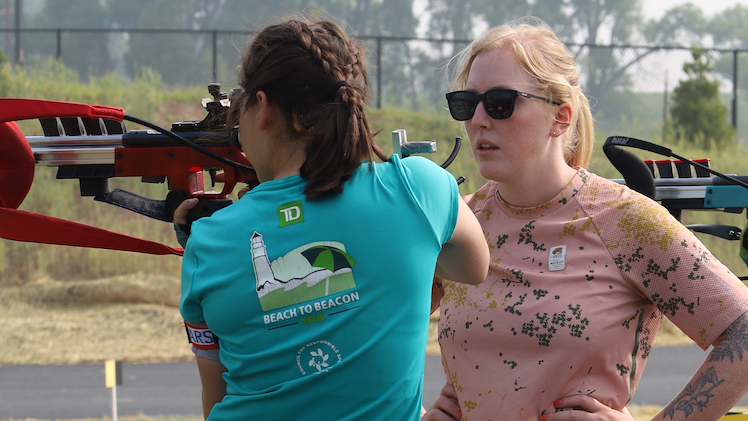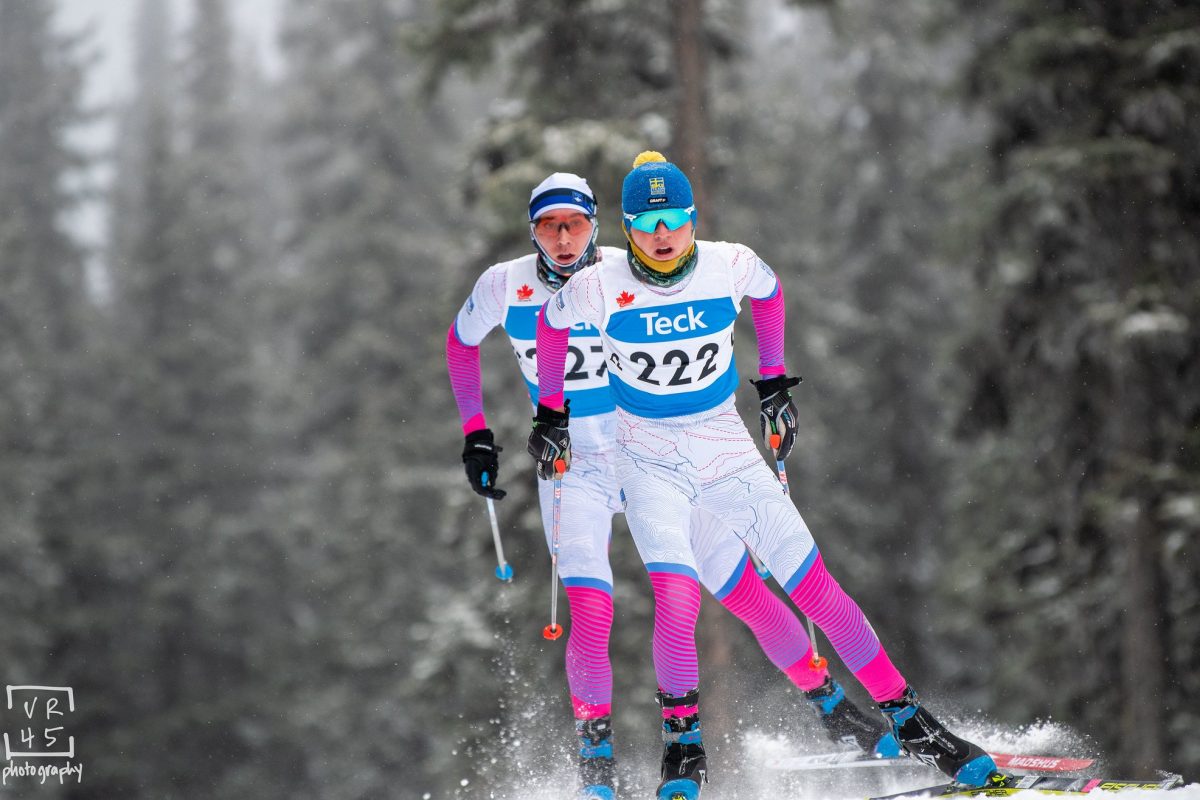For biathletes, it’s relatively easy to focus on either skiing or shooting. What’s harder is to focus on both at the same time, as is necessary in a race setting. Enter the “combo” workout, where athletes alternate running, skiing, or rollerskiing with shooting.
“The idea is simple,” said Tracy Colliander. “It’s to mimic our race conditions with the shooting, and to get an elevated heart rate with the shooting.”
She would know: Tracy and her twin sister Lanny Barnes have arguably done more combo workouts than any other women in the country. Their biathlon careers started in earnest at 2001 Junior World Championships in Khanty-Mansiysk, Russia, and haven’t slowed down since. At the same event in 2002, they joined with Carolyn Bramante to win a silver medal in junior women’s relay.
As seniors, Lanny has competed in five World Championships and Tracy in four. Both sisters raced at the 2006 Olympics in Torino, Italty, and Lanny also represented the U.S. at the Vancouver Olympics last season, where she shot clean to notch a 23rd-place finish in the individual race. It was the best finish for an American woman in 16 years.
So needless to say, the Barnes twins have done a few combos in their day.
“Combos can differ in the physical aspect ranging from running, to rollerskiing (skiing), biking or strength,” they said. “Most combo workouts are done rollerskiing or running. If a rollerloop is available at a biathlon range, then rollerskiing can be done, if not, athletes mostly run.”
That’s not the only way athletes can adapt the almost infinitely flexible structure of the combo workout.
“Combos are done at just about every pace, from level one to level five,” they said, although they noted that most combos were reserved for intensity sessions, meaning that they were performed closer to race pace.
How do they keep combos exciting after more than ten years of practice? The sisters suggested naming the workouts. For instance, if they had eight clips (five bullets each) to shoot in a workout, they could use the first two as a sprint race (one prone stage and one standing), then the second as a pursuit (two prone and then two standing) and the third as a relay (one prone, one standing) and call the whole thing “World Championships”.
“That way you kind of visualize the race when you come into shoot and try to put a little pressure on it,” the sisters said.
Here are a few examples of combo workouts that are staples in the sisters’ training plan.
Race Pace Combos

Just as “four-by-four” intervals are a staple for skiers seeking to improve their ability to work at full capacity, level five combos are essential for biathletes who want to practice shooting at race pace. The Barnes sisters said that level five combos are one of their favorite workouts.
“You come into the range as hard as you can, to the point where you are on the edge of control with your shooting,” they said. “During this workout, shooting is incredibly tough and you have to work for every shot. But after doing a workout like this you’ll find that your normal race pace shooting becomes a lot easier and it gives you the confidence to come into the range pretty hard.”
Tracy and Lanny said that most of their intensity workouts were combos, although sometimes they did not add shooting to their hard days, for instance if there was better, harder terrain to be found away from the shooting range.
Easy Combos
Athletes obviously can’t do race-pace work every day; the rest of the time, they often incorporate easier combo workouts into their training. While they aren’t quite as valuable as their harder relatives in terms of learning how to shoot under stress, even adding shooting to a recovery workout gives a greater benefit than working on shooting and skiing separately.
The Barnes said that the key to adding shooting practice into a recovery workout was to find ways to keep the skiing easy.
“Most of the time if people are doing level one combos, then most of the shooting is done in the beginning of the workout or at the end of the workout with short loops, so that you are getting the heart rate up with shooting, but you aren’t spending the entire level one workout at the range,” they said. “You’ll shoot eight clips with short loops (maybe range loops) and then finish your workout with a more continuous workout without stopping to shoot.”
Strength Combos

In a strength combo, rather than running or skiing, athletes focus on resistance exercises and plyometrics, and shoot after every exercise.
“We personally really like this workout, because it get’s your heart rate up a bit, but it really makes your arms and legs a bit shaky when you shoot,” the sisters said. “Often times you’ll get this same shaky feeling during a race, so the more you practice it, the more it isn’t a big deal to shoot with your legs shaking during a race.”
Ladders
To work more specifically on shooting, the Barnes do “ladder” workouts. Other athletes should take note, because the sisters are some of the fastest and most accurate shooters on the World Cup circuit.
To attain this level of speed and precision, they designed workouts to learn how to shoot quickly.
“You have a progression in shooting, and in order for you to move on to the next step on the ladder, you have to “hit” or complete that step,” the sisters explained. “For example, the first step might be you have to hit five targets on paper in the prone position in under 28 seconds. If you get that you move on, if you don’t you shoot it again. Then, the next one is five hits on paper for the standing position in under 25 seconds. Then you’d shoot prone on metal in under 23 seconds, five standing hits on metal in under 20 seconds, and so on.
“Each step or stage of the ladder is more difficult than the previous. The targets either get smaller or the time gets shorter, or both. Either way it gets progressively harder and with more pressure; the goal is to get through the progression with the allotted number of clips.”
As an added bonus, the sisters said, ladders are “tough and so much fun.” With a group, ladders can become a competitive event to see who can get through the workout with the fewest clips, which means getting stuck at the fewest number of stages.
“It helps to keep combos from getting monotonous,” said Tracy and Lanny.




